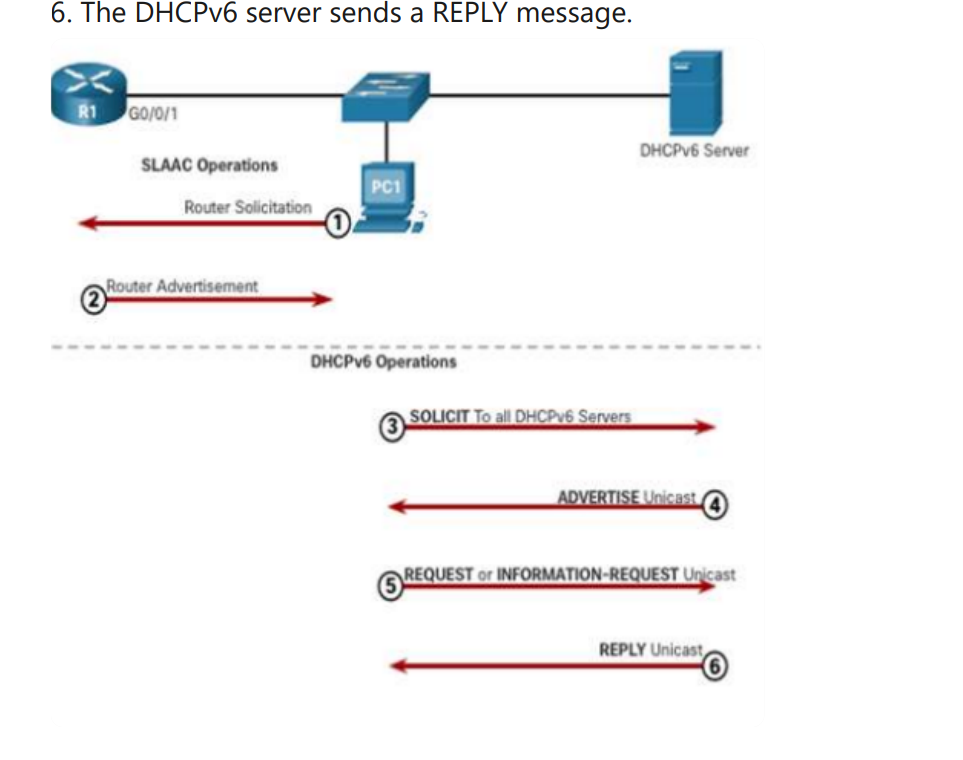Module 8: SLAAC and DHCPv6
1/14
There's no tags or description
Looks like no tags are added yet.
Name | Mastery | Learn | Test | Matching | Spaced |
|---|
No study sessions yet.
15 Terms
GUA
Global Unicast Address
Stateless
No device is tracking the assignment of IPv6 Addresses
Stateful
A DHCPv6 Server is managing the assignment of IPv6 Addresses
SLAAC Only (Stateless)
Router sends Router Advertisment (RA) messages providing all IPv6 addressing info
Hosts use the RA info for all their adressing, incl. their own GUA
SLAAC with DHCP Server (Stateless DHCPv6)
Router send RA messages to hosts with configuration information, inform them to contact stateless DHCPv6 Server for additional configs
Hosts use RA info to create own GUA and get additional info from server
DHCPv6 Server (Stateful DHCPv6)
Router send RA messages to inform hosts to contact a DHCPv6 server or router for all config information (except default gateway → obtained from RA messages)
A flag (RA)
Adress Autoconfiguration = use SLAAC to create GUA
O flag (RA)
Other Configuration = additional information from a stateless DHCPv6 server
M flag (RA)
Managed Address Configuration = use statefulss DHCPv6 server
ICMPv6 RS messages
Router sends RA messages every 200 seconds OR when it receives a RS from a host
Host wants to receive IPV6 addressing information → send RS message to all-router multicast address ff02::2
Generate Interface ID
Subnet information from RA but Interface ID
Randomly by OS from client
EUI-64 using the mac address + fffe in middle of address
Duplicate Address Detection (DAD)
NS (Neighbor Solicitation) with solicited-node multicast address with last 24 bits of IPv6 address of host
If no devices reply with a NS, the address is available
Stateful DHCPv6
1. The host sends an RS message.
2. The router responds with an RA message.
3. The host sends a DHCPv6 SOLICIT message.
4. The DHCPv6 server responds with an ADVERTISE message. 5. The host responds to the DHCPv6 server.
6. The DHCPv6 server sends a REPLY message.
